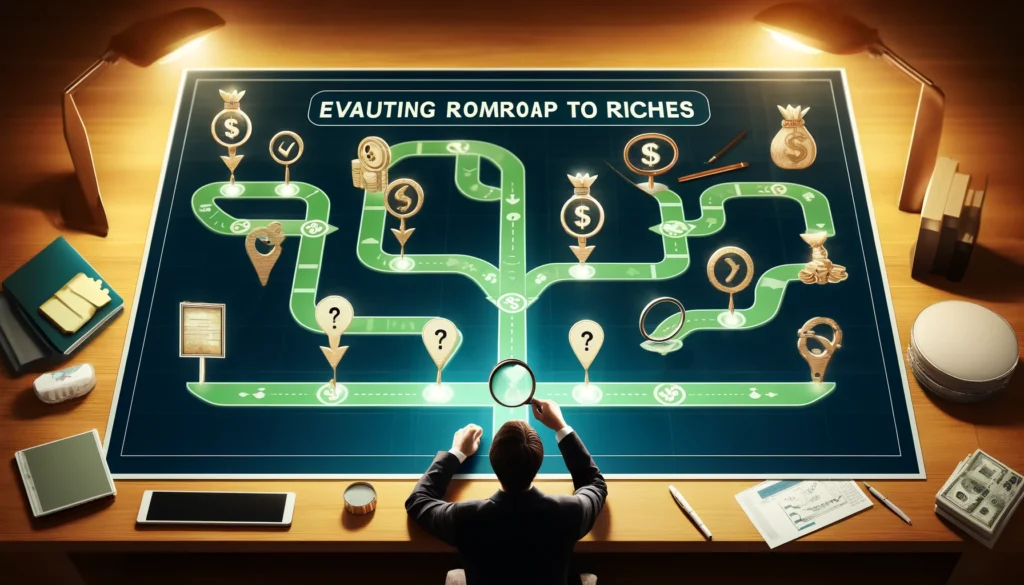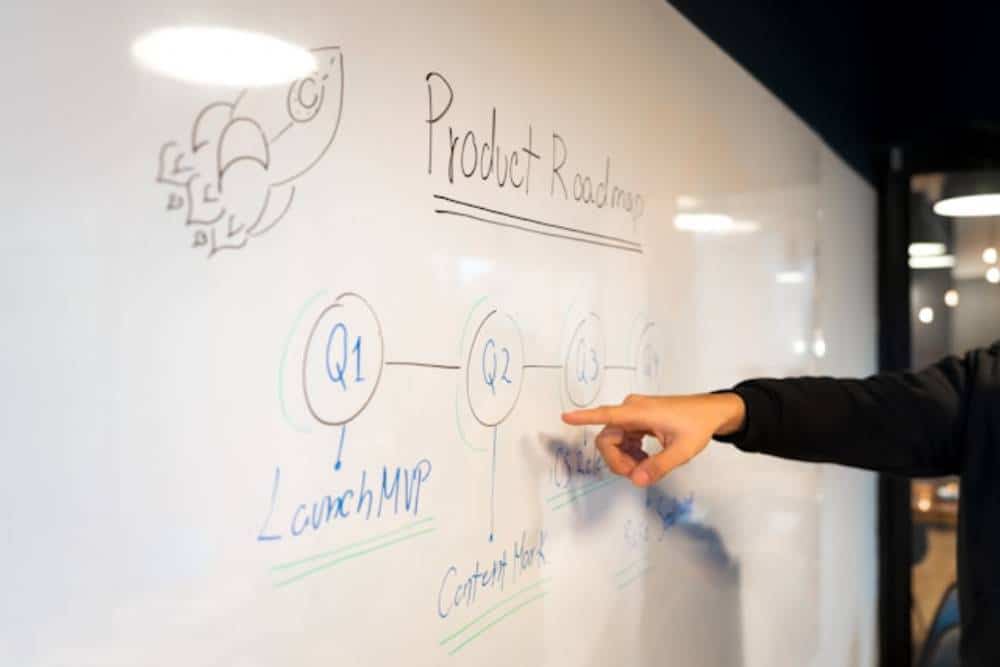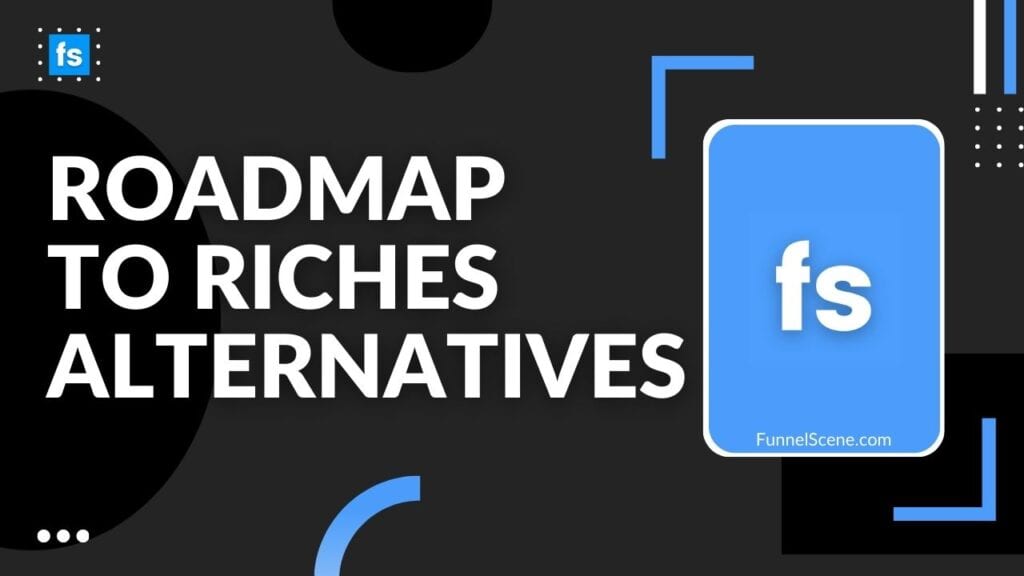Roadmap To Riches is known for its focus on mindset development, wealth-building strategies, and financial literacy. For individuals looking for other options or additional programs in online wealth creation, there are several alternatives available. This article will explore Roadmap To Riches alternatives, discussing their features, benefits, and comparing them to Roadmap To Riches.

Introduction to Roadmap To Riches
Roadmap To Riches was a popular online business opportunity that gained significant attention in the mid-2000s. The program promised to provide individuals with a step-by-step roadmap to creating wealth and financial freedom through internet marketing and direct sales.
Participants were encouraged to join the program, purchase a membership package, and then recruit others to do the same in order to earn commissions. The program claimed to offer access to exclusive training, tools, and resources to help individuals build a successful online business.
However, Roadmap To Riches faced criticism for its emphasis on recruiting others and its high membership fees. In addition, the program eventually fizzled out and is no longer as popular or widely recognized in the online business world.
Understanding the Need for Alternatives
Roadmap To Riches was a popular multi-level marketing program that promised participants the opportunity to achieve financial success through selling products and recruiting others to join the program. However, like many MLM programs, Roadmap To Riches faced criticism and legal issues due to its structure and business practices.
As a result, it is important for individuals who are looking for opportunities to achieve financial success to understand the need for alternatives to programs like Roadmap To Riches. By exploring different options, individuals can find programs that align with their values, goals, and interests, and avoid potential pitfalls associated with MLM programs.
Criteria for Evaluating Roadmap To Riches Alternatives

When evaluating alternatives to Roadmap To Riches, there are several key criteria that should be considered in order to make an informed decision. These criteria can help you determine which opportunity is the best fit for your financial goals and personal preferences.
- Product or Service Offering: One of the most important factors to consider when evaluating alternatives to Roadmap To Riches is the product or service offering. Make sure that the program offers a product or service that you believe in and are passionate about promoting. Look for programs with high-quality products or services that provide real value to customers.
- Compensation Plan: Another important factor to consider is the compensation plan. Look for programs that offer fair and transparent compensation plans, with multiple ways to earn income. Avoid programs that rely heavily on recruiting others as the primary source of income, as this can lead to a pyramid scheme structure.
- Training and Support: Look for programs that provide comprehensive training and support to help you succeed. This includes access to mentors, resources, and ongoing education to help you build your business effectively.
- Company Reputation: Research the reputation of the company behind the program. Look for programs with a solid track record of success, positive reviews , and ethical business practices. Avoid programs with a history of legal issues or negative press.
- Cost: Consider the cost of joining the program, including any membership fees, product purchases, or monthly expenses. Make sure that the program is affordable and offers a good return on investment.
Navigating roadmaps can present challenges for product managers, as they may face inquiries from multiple departments within the organization, potentially leading to feelings of anxiety and frustration.
Creating a product roadmap is an effective way to align your organization and communicate the product plan. While it may be time-consuming, a well-crafted roadmap provides insights to stakeholders and enhances confidence in product leadership.
However, establishing a roadmap can be difficult as it involves aligning your company with your product vision, ensuring each function has the necessary level of detail while also remaining connected to overall objectives.
Companies may sometimes approach product roadmap planning incorrectly by prioritizing deadlines above all else, leading to team stress. In some cases, companies may create a roadmap but fail to regularly update or refer to it.
Many roadmaps lack a connection to product strategy by focusing solely on features, lacking clear goals or themes.
Effective roadmaps should be the result of collaboration, incorporating input from various stakeholders and cross-functional teams. They should be regularly updated to ensure relevancy, and should focus on achieving desired outcomes rather than just producing outputs.
Essential pieces of a product roadmap

The product roadmap should clearly communicate the product strategy to all stakeholders, considering the diverse needs of different audiences. It is important to engage with all team members and achieve consensus on the most effective approach for sharing this information.
We have compiled various types of roadmaps to help you effectively communicate the purpose and details of your plan to stakeholders.
Timeline
When creating a roadmap, it is essential to clearly identify and prioritize short-term, medium-term, and long-term features without assigning specific dates.
Example timelines:
- Q1, Q2, Q3
- March, April, May
- Now, Next, Later
Features
The features being released will be categorized based on the project management tools used and what is being communicated. Features can be broadly described as those being built, or they can be further broken down into themes and subfeatures.
Examples (from high-level to detailed):
- New user onboarding, Team collaboration, Video messaging
- Create user signup flow, Share files between teammates, Record video calls
- Implement SSO, Integrate Dropbox, Share saved video files
Goals
The purpose of your products and features is to achieve specific goals for your business, not just to do work. By setting goals, you let your organization know the direction of the product. These goals can be specific to the product or broader business goals.
Examples:
- Improve team communication platform
- Launch dashboard analytics
- Increase monthly active users by 5%
The Importance of Tailoring your Roadmap to the Right Audience
Various stakeholders may find different types of roadmaps more effective. It is important to choose views that align with how you want to communicate and engage your organization with your product vision.
- Utilize leadership roadmaps, such as release plan roadmaps or objectives timeline roadmaps, to offer senior executives and stakeholders an overview of the product team’s work. These high-level roadmaps provide concise summaries of your product strategy, including market opportunities and financial details, allowing for further exploration if necessary.
- Company roadmaps, such as release plan or release timeline roadmaps, are useful tools for providing detailed information to cross-functional teams like sales and customer success. They help manage expectations with prospects and customers and serve as a platform for sharing customer feedback.
- Use delivery-focused roadmaps, like Kanban, sprint plans, or features timeline, with specific timelines for development teams to access detailed information. Ensure objectives, development status, product areas, and necessary support work are clearly communicated. Consider dependencies and highlight potential risks.
- Customer-focused roadmaps, such as release plans or now-next-later roadmaps, prioritize features based on customer importance and inform internal customer-facing teams like sales, customer success, and marketing about upcoming product developments.

7 Examples of Effective Product Roadmaps
Example 1. Release plan
Example 2.Sprint plan roadmap
Example 3. Now-next-later roadmap
Now-next-later roadmaps outline your priorities over different time frames, with a focus on the near-term. The “Now” section contains detailed features that are currently being worked on, while the “Later” section includes higher-level features aligned with your long-term strategy. These roadmaps are ideal for teams in fast-changing environments where release dates are flexible. They allow you to communicate your plans to customers without committing to specific deadlines, making them great for sharing product strategies with larger audiences, such as at All-Hands or Town Hall meetings.
A rigorous prioritization process is important to keep things on track when dealing with a fast-paced environment. Failure to prioritize effectively may result in items remaining in the “later” category for an extended period, and ideas that do not align with the long-term strategy could end up being prioritized in the “now” or “next” categories.
Example 4. Kanban roadmap
A Kanban roadmap organizes initiatives into stages like backlog, planning, in progress, and completed, helping development teams track progress.
One advantage of a Kanban roadmap is that it enables product teams to communicate their upcoming plans without specifying exact dates. This allows teams to showcase their progress on specific features and keeps the delivery team motivated by reinforcing their project goals.
Timeline roadmaps
Timeline roadmaps are commonly used by product managers to align with stakeholders and cross-functional teams. Stakeholders can see key initiatives’ goals and duration visually, while cross-functional teams can easily organize launch activities with clear timelines. Avoid setting tight timelines that may create burdensome expectations and instead choose a timeframe that effectively communicates your plans. This could be monthly, quarterly, or any other timeframe that best suits your needs or the needs of your stakeholders.
Example 5. Features timeline roadmap
Example 6. Objectives timeline roadmap
In larger organizations and complex environments, senior executives and stakeholders often seek a high-level view. An objectives timeline roadmap focuses on outcomes, not outputs, providing alignment on product direction. It clarifies when you’ll work towards each business goal and where it fits in with major milestones.
Utilizing objectives timeline roadmaps can effectively communicate product strategy and goals to teams for the upcoming 2-3 quarters. This approach aligns product and business strategies with end deliverables, like features.
We prioritize objectives based on upcoming milestones in time, such as Gartner analyst briefings, industry conferences, marketing launches, commitments to strategic partners, or major customers, and consider what needs to be accomplished by those time points.
Example 7. Release timeline roadmap
When planning objectives, it’s okay to stay high-level at first. But as you get ready for sprints and launches, you need to decide which features to release together and when. A release timeline roadmap helps you plan and communicate upcoming releases with clear timeframes for cross-functional teams. This includes sales and customer success teams. Stakeholders can see what’s coming up in the next app version or future releases. Product management software, such as Productboard, can help larger product organizations manage multiple teams and various release schedules with multiple release groups. This keeps everyone informed and organized.
A release timeline roadmap can be beneficial for creating a tactical roadmap to track progress against important deadlines. In Agile environments, there may be a reluctance to plan releases too far in advance. A release timeline roadmap helps maintain focus on specific release objectives while also highlighting key milestones and deadlines.
Conclusion
In conclusion, while Roadmap To Riches was a popular program in the past, there are many alternative options available for individuals looking to achieve financial success and build wealth. From affiliate marketing programs to e-commerce platforms to real estate investing, there are countless paths that can lead to financial prosperity.
It is important for individuals to carefully research and evaluate these alternatives to determine which one best aligns with their goals and interests. By considering options such as features timeline roadmaps, objectives timeline roadmaps, and release timeline roadmaps, product managers can effectively communicate their plans to stakeholders and cross-functional teams.
Frequently Asked Questions
What are Roadmap To Riches alternatives?
Roadmap To Riches alternatives refer to other online training programs or platforms that offer similar or complementary content and services focused on mindset development, wealth-building strategies, and financial literacy.
Why would someone consider alternatives to Roadmap To Riches?
There are various reasons why individuals may choose to explore alternatives to Roadmap To Riches, such as seeking different teaching styles, accessing specialized content, finding programs that align better with their goals and preferences, or looking for additional support and resources.
How do I evaluate Roadmap To Riches alternatives?
You can evaluate Roadmap To Riches alternatives based on criteria such as focus areas, training methods, support systems, pricing, user feedback, success stories, and community engagement.
Are there specific criteria to consider when comparing alternatives?
Criteria for comparing alternatives may include focus areas covered, training methods, support options, pricing, success stories, and community engagement.
What are the key features to look for in alternative programs?
Important aspects to consider when evaluating alternative programs include thorough content, interactive resources, mentorship options, continuous support, practical strategies for application, measures of success, and a supportive community.

